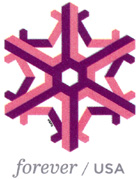
| Holocene Climatic Change James S. Aber |
| Medieval optimum | Medieval glaciation |
| Little ice age | End of LIA |
| Grapes and climate | Deciduous forest |

| Holocene Climatic Change James S. Aber |
| Medieval optimum | Medieval glaciation |
| Little ice age | End of LIA |
| Grapes and climate | Deciduous forest |
The following chronology indicates a close correspondence between wine harvest dates and glacier advances during the Little Ice Age. Grape yield correlates most closely with mid-summer temperature. Early wine harvests generally coincided with glacier retreats; late harvests were times of glacier advances. However, glacier responses usually lagged 5-7 years behind the climatic changes indicated by wine harvest dates (Pfister 1981). Chronology of wine harvest dates and climatic conditions in western Europe is based on Le Roy Ladurie (1971).
During the late twentieth and early twenty-first centuries, global warming has impacted vineyards and wine production. When to harvest grapes for a fine wine is a delicate balance between three factors (Nicholas 2015):
For optimal grape ripeness and wine flavor, all three factors achieve best balance in about three to four months depending mainly on summer temperature. Higher temperature speeds ripening and leads to grapes with higher sugar content. Furthermore, highly acclaimed vintage wines are often produced in years that are dry in the month before harvest, which explains why dry-summer Mediterranean climate is favorable.
The grape ripening process is highly sensitive for the thousands of varieties of Vitis vinifera grapes, each of which has unique conditions of soil and climate. For example, Pinot Noir and Riesling grapes prefer cool climate, whereas Cabernet is a warm-climate grape.
The eventual result of this trend is possible relocation of vineyards into cooler climates at higher altitudes or latitudes. For example, southern Australian vineyards are moving into Tasmania. Oregon and Washington may gain new vineyards at the expense of California. Likewise in Europe, wine production may gradually shift from traditional regions in Spain, southern France, Italy, and Hungary to southern England as well as northern France, Belgium, Germany and southern Poland. However, these changes are not likely to take place quickly, as developing a vineyard and producing high-quality wine take many decades to perfect the grapes and production techniques.
Medieval climatic optimum

Medieval glaciation

Little Ice Age

1816: Coldest single year on record in many places in Europe and North America, following the 1815 eruption of Mount Tambora in Indonesia. U.S. postage stamp depicts ice cutting in winter.
![]()
End of the Little Ice Age

Grapes and climate
Phenology is the study of seasonal dates of plant growth phenomena,
such as flowering or ripening in fruit trees or grape vines. The date at
which grapes ripen is mainly a function of summer temperature; warm, sunny
weather results in an early wine harvest, and vice versa. Good
historical records of the annual wine harvest have been compiled from towns
in western Europe (France and Switzerland) by historians interested in the
impact of climate on human activities (Le Roy Ladurie 1971).
Most of the potential flavor and quality of wine is created in the grape during the growing season and is already determined when the harvested grapes are delivered to a winery (Nicholas 2015). Grape acid content (pH) is related primarily to soil pH and depth to the bottom of the clay-rich horizon (Bw or Bt) in soil (Retallack and Burns 2016). Thus older, deep soils with low nutrients (low pH) tend to produce grapes with less acid and more-complex flavors, known as gôut de terroir (taste of soil).

The Tokaj region is famous for a special white wine based on the Furmint grape variety. Most of the region is in Hungary with a small portion in the southeastern corner of Slovakia (shown here). Vineyards extend across southern slopes of the Zemplinske hills (left). Individual fields form intricate patterns on the landscape (right). Kite aerial photos © JSA & SWA.


Röbller Vineyard located on a hill top with 18 acres of grapes in the Missouri wine district. Several French-hybrid varieties are grown as well as the Norton, an American grape derived from Vitis aestivalis. This vineyard was established in 1988 and, thus, is still relatively young. See Röbller Vineyard. Kite aerial photo © SWA & JSA.
Most trees respond to temperature, namely length of winter cooling and spring warming, to trigger leaf emergence, although this may be highly variable among different species. The consequences of this are far reaching as wildlife, particularly migrating birds, may not be able to adjust their schedules to the availability of insects and other food dependent upon early leaf emergence.
Deciduous forest
Phenology likewise affects deciduous forest trees for flowering, fruits and nuts, leaf growth, and autumn color change. Detailed investigations of forest trees in New England began with the observations of Henry David Thoreau in the 1850s. He catalogued leaf emergence for more than 40 species of woody bushes and deciduous trees. Since then, the average date of leaf emergence has moved from May 8 to April 20 (Primack and Gallinat 2016). This shift of nearly three weeks is yet another sign of climate change over the past 160 years.

© J.S. Aber (2021).